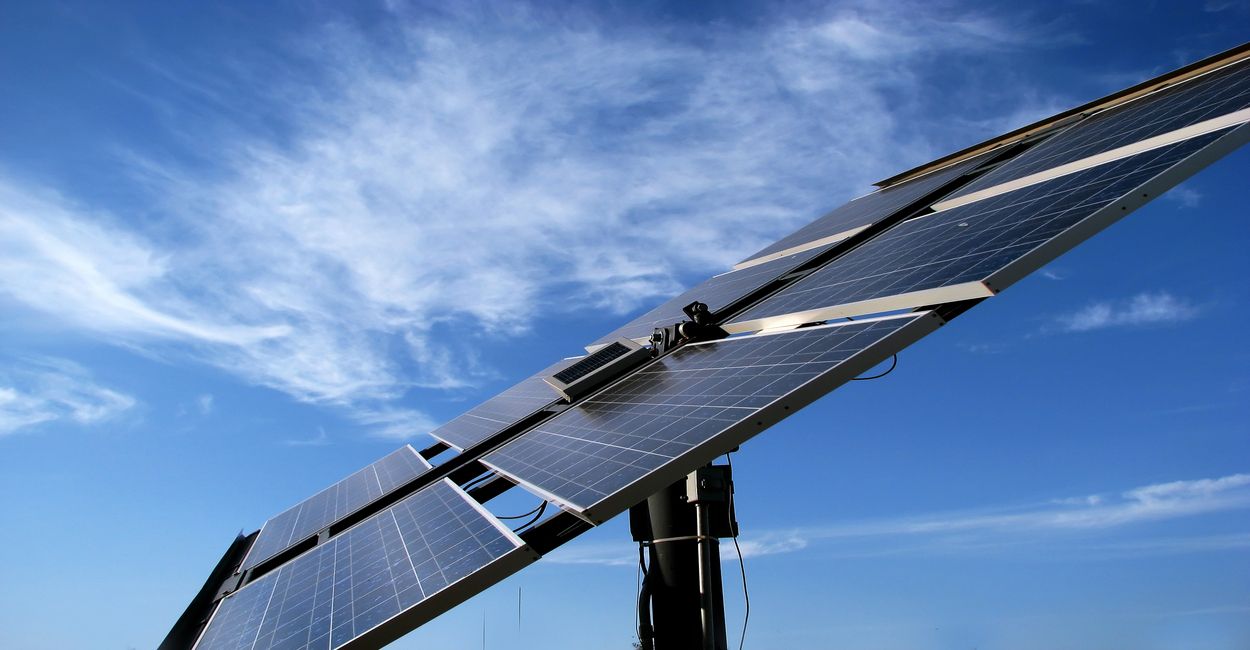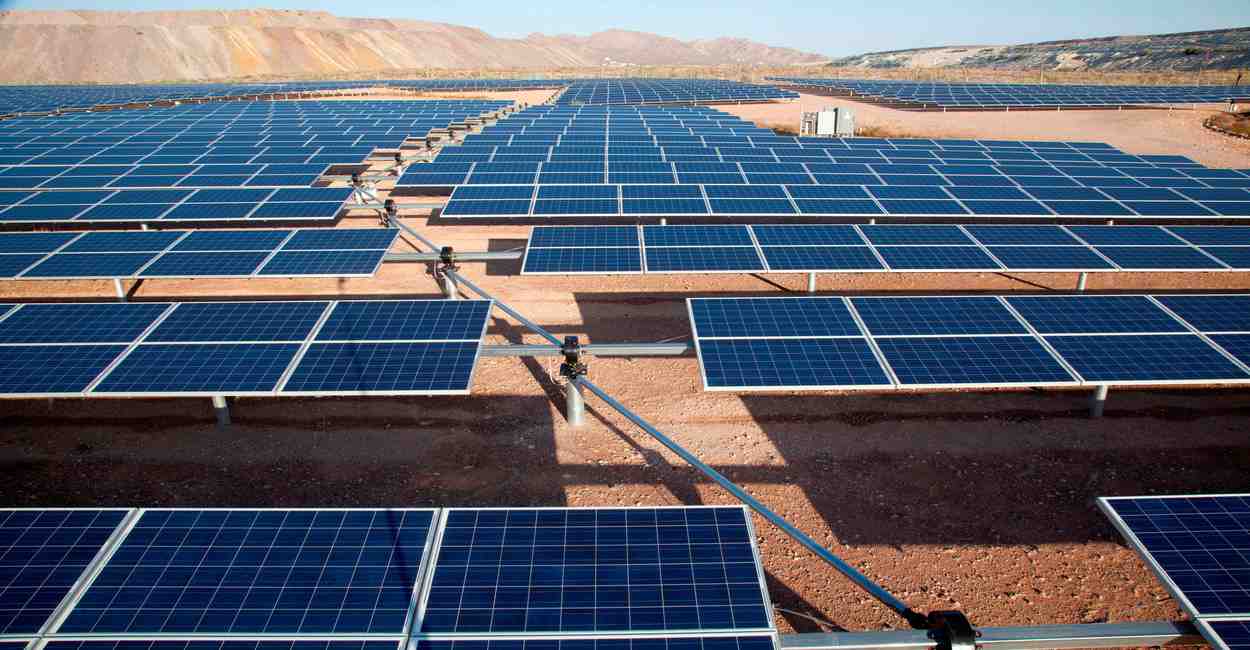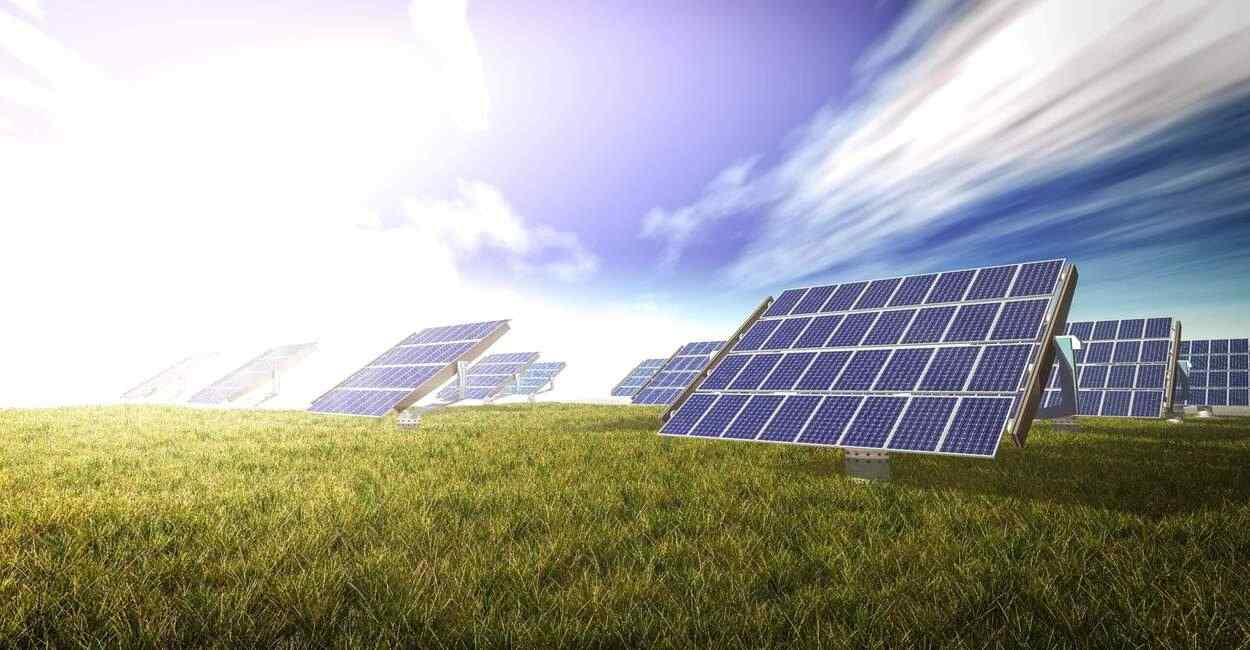Solar Panel Tracking Systems- An Overview

Have you ever wondered how solar PV panels are positioned so that they receive the optimum exposure to sunlight? The answer to the same question is with the help of a solar tracker!
The solar tracking system adjusts the direction of the PV panels so that a solar panel is always positioned towards the direction of the sun. It is notable that by adjusting the panels in such a way that the panels are perpendicular to the sun, more sunlight hits them.
In this way, less light is reflected; thus, the panels trap a greater amount of solar energy. The narrower the angle of incidence will be, the higher the energy a solar PV panel can generate.
The most popular application of a solar tracker is positioning solar photovoltaic (PV) panels perpendicular to the Sun.
What Is Solar Panel Tracking?
For the lengthy process of mounting and orienting photovoltaic panels, tracking is a more advanced technology. Generally, a solar tracker is used to orient a solar PV panel towards the sun so that the panels can absorb the maximum possible sunlight. In previous times, fixed systems have faced a compromise in overall energy productivity because they are not designed to trace the sun and orient to an optimal angle. Solar trackers are new systems that can move to “track” the progress of the sun across the entire sky, thereby gaining maximum light from the sun and maximizing the energy output of the panel system.
Components Of A Solar Tracker-
a) Tracker Mount – It is the skeletal structure that holds the panel in a properly inclined position.
b) Driver – It is used to control the rotation of the motor shaft.
c) Sensors – It is used to detect relevant parameters induced by the sun and yield output.
d) Motor – It controls the movement of the tracker.
e) Algorithm – It is used to calculate the sun's position from algorithms using the time, date, and geographical location.
History Of Solar Tracking System
During the early 2000s, it was a matter of consideration whether weather tracker technology or a fixed-tilt option was better for utilities or not. Developers were in a dilemma of shifting to a new technology largely by keeping the part of maintenance into their minds. However, with time, tracker technology continued to develop as a viable alternative to fixed-tilt for utility-scale solar plants.
Over the system, there are various tracker components that include motors, controllers, and sensors that are becoming smaller and smaller with time. These tracking systems were also optimized to reduce the required components. The parts of gears became smaller and more efficient, and sensors became more compact through the utilization of SCADA and monitoring technology. The whole setup became sleeker and simpler to install that did not require any specific specialized tools.
Solar trackers have continually evolved in such a way that it is likely to become better and more efficient. From single-axis to dual-axis trackers and from passive to active trackers, these days, the trackers are equipped with smart features that guarantee better output. In India, solar trackers have featured some properties that include weatherproof mechanisms, multimode intelligent operations, link tubes with articulated joints, dust avoidance, and rain mode. Some recent innovations include simplified designs that have fewer motor parts and self-calibration. Through the backtracking feature, the check on solar trackers can also be kept. These trackers can self-clean the modules and hence do not require any routine maintenance.
Types Of Solar Tracking Systems
Depending on the method of working, solar trackers can be categorized as follows:
• Passive Tracking Devices
• Active Tracking Devices
• Open Loop Trackers
Open Loop Trackers are further divided into two types:
• Timed Trackers
• Altitude / Azimuth Trackers
On the basis of motion or directional flexibility, solar trackers can be categorized as follows:
• Single-Axis Solar Trackers
• Dual-Axis Solar Trackers
Single V/S Dual Axis Solar Trackers
Single-axis Solar Trackers
The role of the single-axis tracker is to move or adjust the solar panels by rotating around one axis. Its movement is usually aligned in North and South directions.
This device helps in enabling the PV panels to move in the direction of the sun from East to West.
A single-axis tracker enhances the efficiency of a solar system without making the installation of PV modules. The owner must make the installation of the single-axis tracking system on a flat area of land which is sunny and dry in nature.
A single-axis solar tracking system has a high initial cost of installation, which can further improve the productivity of your solar system.
Hence, the system can promptly recover the amount and other expenditures.

Dual-axis Solar Trackers
If we consider the workability of a dual-axis tracker, then it enables the panels to rotate on two axes at the movement of time. A dual-axis tracker is aligned horizontally as well as vertically, i.e., it can adjust in all directions – North, South, East, And West.
These trackers are appropriate for commercial properties. A dual-axis solar tracking system is designed in such a way that it can maximize solar energy generation across the year.
The usage of algorithms and sensors is done in the system, which can be helpful in tracking the changes corresponding to seasons and daily motion.
Active V/S Passive Solar Tracker
Here we have mentioned how these two types of trackers differ from each other.
Active Solar Tracker
Among the list of various tracking systems installations, active solar tracking systems are the prime ones. These tracking systems have an in-built energy supply that helps the motors or other mechanical devices to run. It helps to tilt the attached solar panels directly.
• An active solar tracker determines the intensity of the sunlight by making the best use of light sensors.
• The system evaluates where the solar modules should be oriented.
• Active solar trackers are ideally suitable for large and complicated solar arrays.
Passive Solar Tracker
A passive solar tracker tracks the sun without the involvement of any additional source of energy. A passive solar tracker I moved by the utilization of heat from the sun to warm a gas present inside. When the gas expands, it creates a mechanical movement of the PV panels.
When one side of the panels gets heated, the other side’s piston rises, which leads to tilting the panel over the sunny side. When the sun sets, the cool gas downs and becomes compressed again. Hence, the panels rotate back.
Application Of Solar Tracking System
- As compared to others, trackers generate more electricity, and the increase can be as much as 10% to 25%, depending on the geographic location of the tracking system.
- There are two types of solar trackers, single-axis and dual-axis. The choice of a tracking system depends on the size of the PV plant, the local weather conditions, the latitude of the place, and the electrical requirements of the project.
- Solar trackers are great land optimization tools as they can generate more electricity when compared to their fixed-tilt counterparts while consuming the same amount of land space.
- Using a tracking system helps maximize the energy gains during these peak time periods by tracing the sun in the sky and capturing its energy throughout the day.
- Advancements in technology and electronics have drastically reduced the concern of maintenance for tracking systems.

Disadvantages of Solar Tracker
o Solar trackers are a little bit more expensive than their stationary counterparts, as they are regarded as complex systems.
o The requirement of maintenance is more in the trackers than in fixed systems. The type and quality of the solar tracking system is the aspect of how much maintenance the system requires and how often.
o The tracking system needs site preparation. Additional trenching for wiring and grading is also one of the major considerations.
o Financing tracking projects is a more complex and high-risk venture from a financier’s viewpoint.
o Solar trackers do not support snowy weather and are only suited to hot climates.
o Fixed tracking systems are field-compatible systems that can accommodate up to 20% slopes in the E/W direction. The tracking systems typically bear less slope accommodation, usually around 10% in the N/S direction.
Working Principle Of Solar Tracking System
There are two different drivers that dictate the motion of the trackers:
The very first one is passive, and the other one is active.
• Passive trackers are solely dependent on solar heat to guide and move the tracker. Basically, a low boiling point compressed gas fluid is driven at one side or the other to move the tracker in response to the imbalance created by the heat from the sun.
• The usage of controllers is made by the active trackers that monitor the position of the sun’s movement to direct motor the movement of the trackers.
• In active solar trackers, Light Dependent Resistors (LDRs) are used as a part of the sensor. Their difference in output is used to generate error signals. A processor calculates the position of the sun with the help of formulae or algorithms using its time/date and geographical information to transmit signals to the motor orientation.
• In high-end solar trackers, a feedback system is also deployed wherein the output signal of various processes is sent back as the input to the system that it is controlling. Consequently, corrections can be made to any errors and compensate for disturbances in the system.
Is A Solar Tracking System Good To Be Used?
A solar energy tracking system can be installed in a very handy manner. The setup of the solar energy tracking system is totally based on the locations with an adequate amount of solar energy accessibility.
There must be wide consideration over the installation of a solar tracker so that your panels follow the sun throughout the day.
Solar tracking can increase the production of power in ground-mounted & roof-mounted installations. However, these devices are not suitable for all solar panel installations.
One must take the consideration of several factors like climate, space, and shading before choosing solar tracking. Solar Tracker devices are feasible for installations with limited space and high energy requirements.
These tracking systems promote the highest benefits for installations in high-latitude locations because of the yearly movements of the sun.
Conclusion
A solar tracker should be positioned at the solar panels at an angle directed to the sun. It is an advanced sun monitoring system that can rotate the panels to track the movement of the sun across the sky.
It facilitates the panel system to make the maximum absorption of the sunlight and optimize the energy output.

